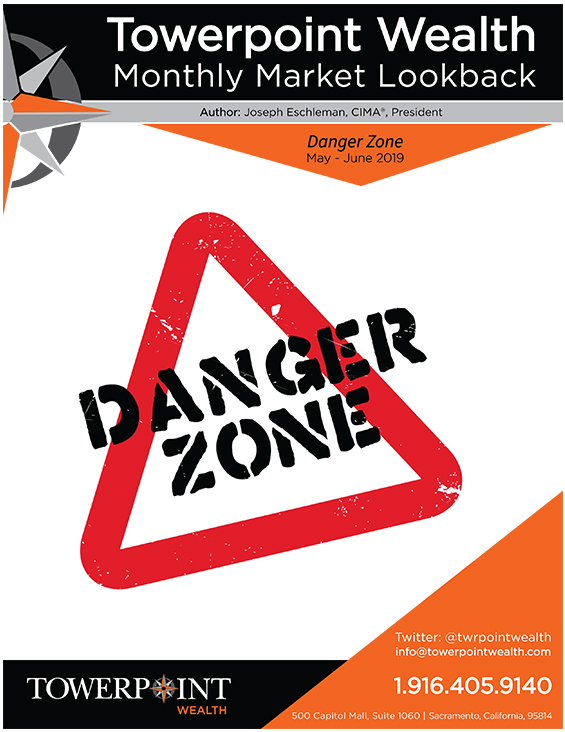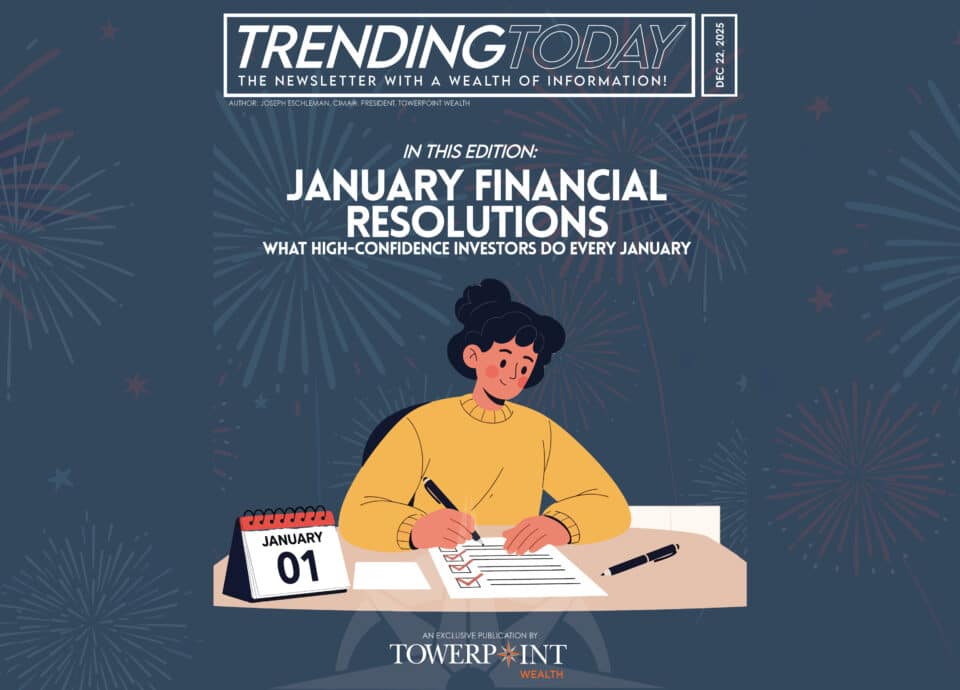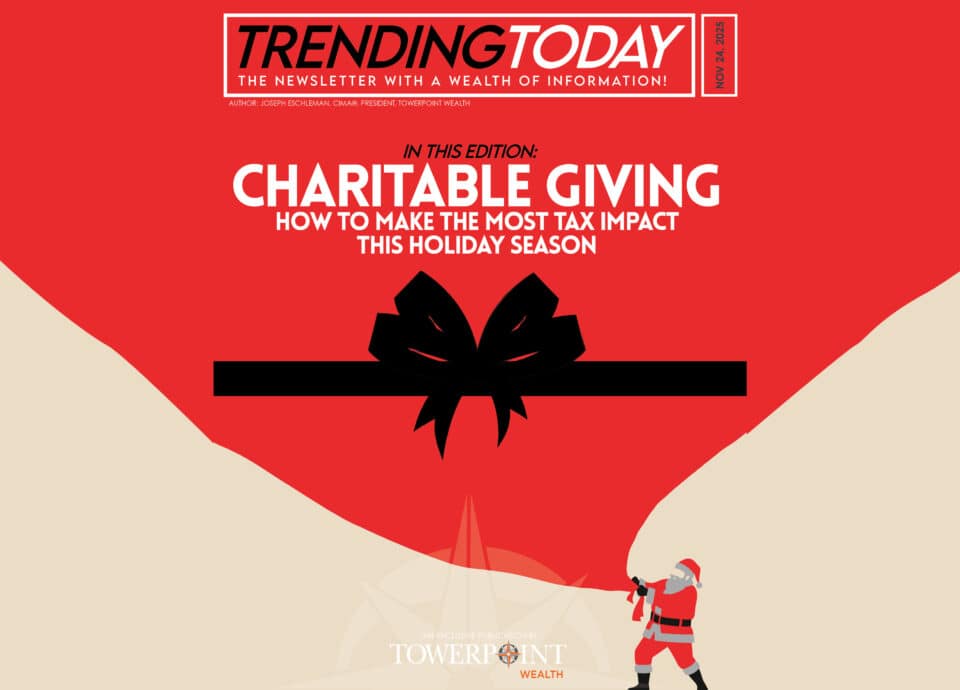“An Investment in Knowledge Pays the Best Interest” (Ben Franklin)
Revvin' up your engine
Listen to her howlin' roar
Metal under tension
Beggin' you to touch and go
Highway to the danger zone
Ride into the danger zone
Headin' into twilight
Spreadin' out her wings tonight
She got you jumpin' off the track
And shovin' into overdrive
Highway to the danger zone I'll take you
Ridin' into the danger zone…
Out along the edges Always
where I burn to be The further on
the edge The hotter the intensity
Highway to the danger zone
Gonna take you
Right into the danger zone
(From “Danger Zone”, performed by Kenny Loggins for the film “Top Gun”, 1986)
“Sell in May and go away” is, perhaps, our least favorite market cliché. It strikes us as simplistic and slightly juvenile. Except for the fact that it often proves true – the summer months do tend to exhibit less trading volume and, therefore (perhaps counterintuitively), the markets often react more violently to transitory news.
Many investors probably wish they had sold this May and gone away – it was a volatile and chaotic month, with all major equity markets posting negative performances. The primary drivers seem to be (a) a perception that both global economic growth and earnings are slowing down, and (b) the ongoing (and escalating) trade tensions between the US and China (and, now, potentially between the US and both Mexico and the European Union).
The collapse of Theresa May’s Conservative government in the UK over the issue of “Brexit” did not help, either. While we continue to believe that things will work out over time with respect to both trade negotiations and Brexit, we also believe both issues may get much worse before they get better, and many investors seem to agree with us.
In addition to a dramatic increase in market noise (i.e., trade tensions and Brexit), the market signals we encourage investors to focus on – earnings, economic growth, inflation, interest rates, and global central bank policy – are somewhat mixed:
- There seems to be little disagreement that both economic growth and earnings are decelerating, though actual recession still seems to remain fairly far down the path;
- Inflation has shown some signs of accelerating as both input prices and wages slowly increase, but for now it remains well under control, and the bigger risk in Europe is actually deflation;
- Interest rates should remain low into the foreseeable future; and
- All major global central banks remain accommodative. In fact, the markets are actually starting to price in an assumption of a Fed rate cut (or perhaps even two) at some point in 2019.
The shape of the US yield curve, which is incredibly flat and which at times over the past few months has temporarily inverted, seems to be signaling an impending recession, and perhaps that is true, but we do not think it will happen in 2019.
Because we do believe there will be an eventual end to the ongoing trade negotiations between the US and its trading partners (and a collective market “sigh of relief” when it occurs), and because we do believe the Brexit issue will also work itself out, we remain generally constructive on both the global economy and the overall investment markets. But we also are increasingly cautious.
It is true that things tend to slow down as we head into and through the summer months, but it is also true that for the past several years we’ve experienced a sharp uptick in volatility as we head into the fall.
We fully expect that to be the case again this year, and investors should manage their expectations and their portfolios accordingly.
With that as a backdrop, looking out over the current economic and investment landscapes, here is what we see.
The Current Economic & Market Landscape
The global economy is still expanding, though slowly:
- The current estimate of Q1 GDP growth in the US is 3.1%, still very positive but a slight decline from the initial estimate of 3.2%. A fair amount of this expansion was due to inventory growth, which suggests lower growth in the future as the inventories are sold off (source: Bureau of Economic Analysis);
- We suspect future estimates of Q1 GDP will show lower but still positive growth. Growth is expected to slow to roughly 2% over the next 2-3 quarters, and estimates for all of 2019 remain in the 2.0% – 2.5% range (source: The Wall Street Journal);
- Ongoing trade negotiations and additional fiscal and/or monetary stimulus could change the economic outlook for the US over the course of the year. Specifically, US/China trade talks have stalled, and the markets are beginning to price in escalating tensions, tariffs, and mutual retaliation. Some estimates suggest that a protracted trade war could shave as much as 0.5% off of projected US growth;
- Additionally, at the end of May, President Trump unexpectedly announced an escalating series of tariffs on Mexico if it doesn’t do more to stop Central American immigrants from crossing the country to get to the United States. This throws the impending ratification of the USMCA trade treaty into question (USMCA is the replacement to NAFTA);
- AND Trump is also threatening potentially higher tariffs on European imports. As we go to publication it is too early to tell what the impact of these newly announced potential tariffs may do to the global economy, but it won’t be positive, and the markets are reacting accordingly (on the news the equity markets dropped sharply and the US 10-year Treasury rate fell below 2.20%);
- Given the rhetoric and partisanship in Washington, DC, we do not anticipate any agreement for additional fiscal stimulus prior to the 2020 elections;
- That said, there may be additional monetary stimulus in the form of Fed rate cuts. The markets previously had priced in no movement from the Fed in either direction for the remainder of 2019, but sentiment has shifted in the wake of recent volatility and market movement, and there now seems to be a belief that the Fed will cut rates (maybe even twice) prior to year-end;
- Both the US manufacturing (52.8) and services (55.5) sectors remained in expansionary mode in April (any reading above 50 is considered expansionary), but both have showed signs of deceleration for the past several months. The IHS Markit estimates for May for these indicators are 50.6 and 53.2 for PMI and NMI, respectively (source: Institute for Supply Management and IHS Markit);
- The federal debt and deficit are exploding and neither political party is the least bit interested in addressing the issue. There is no spending discipline in Washington, DC right now;
- Inflation remains muted (US CPI was 2% year-over-year in April) but is showing signs of increasing slowly as both wages and oil prices tick up. There seems to be an insatiable demand for US Treasury paper, and May saw a distinct “flight to quality” when the equity market entered its downturn. All of these factors are keeping longer- term interest rates very low;
- The employment picture in the US remains robust, and wage increases are finally showing up (up 3.27% year-over-year in Q1) – not commensurate with the low levels of unemployment and not enough to spark inflation (yet), but workers definitely are making more money, across almost all industry sectors (source: The St. Louis Federal Reserve Bank);
- With the Q1 earnings season in the US largely behind us, both the revenue (56.4%) and earnings (62.5%) “beat rates” are positive and generally in line with historical averages, though both showed declines from previous quarters (source: Bespoke Investment Group);
- The primary threats to continued economic expansion remain escalating trade and tariff tensions and ongoing political “re-adjustments” in Europe (Brexit, Italy, France, and Germany);
- With low inflation, signs of a decelerating economy, and huge investor demand or US Treasuries, there is little upward pressure on interest rates;
- The yield curve remains very flat, and the long end remains “tamped down” by high demand for US Treasuries and a lack of inflation fears;
- Through the end of May, there is only ~14 basis points difference between the yield on the 2- year and 10-year Treasury – the yield curve both flattened and fell over the course of the month as market fears increased;
- There seems to be growing investor sentiment that the flatness of the curve may evolve into an inversion (when short-term rates are higher than longer-term rates) and signal an impending recession. We think this is a bit over-stated and are not overly concerned that (a) the curve will invert for any extended period of time or (b) should it invert it does not necessarily mean we are headed into a recession any time soon (i.e., any time this year);
- Though showing some signs of stabilizing, the US dollar generally has strengthened over the course of the year. We attribute this to the “cleanest dirty shirt” syndrome – despite the dovish tone of the Fed, the US economy is outpacing the rest of the world and investment flows are responding accordingly;
- The Euro area reported a Q1 GDP of 1.2%, the same as the previous quarter and in line with expectations. While not in a recession, European economic growth has fallen fairly steadily since the 3rd quarter of 2017 (source: TradingEconomics);
- Manufacturing all across the Euro area continues to slip and remains in non- expansionary territory – 47.7 in May, which represented the lowest reading since April 2013 (source: IHS Markit and TradingEconomics);
- The Euro area Services index remains slightly expansionary (52.5 in May, down from 52.8 in April), but continues to decline (source: TradingEconomics);
- Euro area unemployment is stable at 7.7%, and remains at its lowest level since 2008 (source: TradingEconomics);
- Inflation is a non-issue in Europe (1.7% year-over-year in April), and the ECB has turned decidedly dovish again. Deflation represents the bigger risk at this point (source: TradingEconomics);
- Japan’s GDP is back in positive territory (1.6% in Q4 2018 and 2.1% in Q1 2019), but remains sluggish and sensitive to changes in exchange rates. A strengthening dollar (should it continue) will help slightly with exports (source: TradingEconomics);
- China’s (official) GDP growth in Q1 2019 was 6.4% (annualized), the same as Q4 2018, and represents the lowest reported growth rate since the Financial Crisis in 2008. That said, fairly massive fiscal and monetary stimulus has had the expected results in catalyzing improved economic activity (source: TradingEconomics);
- The Chinese manufacturing index inched into expansionary territory (above 50) in March and April, but slid back to 49.2 in May (source: Deutsche Bank);
- Should Chinese expansion continue (and we expect it will), it will be beneficial to the global economy, specifically Europe and other EM countries.
The Towerpoint Wealth Economic & Market Outlook:
- The global economy continues to expand, though there is a deceleration of growth;
- US economic growth, interest rates, inflation, and earnings all remain generally expansionary. Wages and input prices are slowly increasing, but we do not see them as threats (yet) to continued expansion;
- Globally, inflation simply is not a problem, due to slow growth and relatively stable input prices. Oil prices rose steadily through mid-May, but have stabilized since then;
- Global central bank policies remain “synchronized” around an easing theme, and this should be beneficial for risk assets;
- Market volatility spiked in May as investors showed increased nervousness over trade tensions, Brexit, and the perception of slowing economic growth. There was a decided “flight to quality”, which drove US Treasuries to extremely low yields;
- The May sell-off dropped US valuations, but they remain elevated by historical standards. Much of the market rally over the first four months of the year was driven by multiple expansions versus robust earnings growth, which was barely positive year-over-year in Q1;
- The emerging markets were punished more severely than the US market in the May sell-off, but for longer-term investors we still like EM valuations relative to US valuations. Returns in US terms will be significantly impacted by what happens to the US dollar over the remainder of the year
- The US yield curve remains incredibly flat (there currently is a ~14 bps difference between the 2- year and 10-year yields), as lower longer-term expected growth rates and investment flows combine with only modest inflation expectations to “tamp down” the long-end of the curve;
- As of the end of May, following the announcement of the Mexican and European tariff threats from President Trump, the 10-year Treasury rate dropped below 2.20% – its lowest level since Q3 of 2017;
- The yield curve has actually inverted if measured by the spread between 3-month rates and 10- year rates (though we prefer to follow the 2-year / 10-year spread). As of the end of May, there was a negative spread of roughly 10 basis points;
- The public credit markets continue to look expensive to us, although investors seem to be fairly compensated for default risk, as corporate balance sheets generally are in pretty good shape;
- Both investment grade and high yield credit spreads widened over the course of May, especially high yield spreads, but that was driven as much by the decline in Treasury rates as it was by an actual increase in credit spreads;
- We remain concerned, however, about high yield liquidity and refinancing risk and the growing level of “covenant lite” bank loans. Additionally, roughly 40% of non- financial investment grade debt is rated BBB – the lowest investment grade level. If and when we head into the next recession, there could be a liquidity crisis if more than a modest amount of this debt falls into non-investment grade territory (source: FocusEconomics);
- For investors who can access the private markets and handle some degree of illiquidity, we still believe there are better opportunities in the private versus public markets, though investors face compressed premiums versus historical levels, driven by huge investment flows over the past 24-30 months;
- Hedge funds generally are performing as expected, and given valuations and renewed volatility in traditional equity and credit markets, there is growing investor interest in considering lower- correlated investment strategies;
- Liquid alternatives (alternative investment strategies that trade in mutual fund form) continue to struggle, and have experienced fairly extensive investment outflows as a result. It is difficult to say with certainty that the issue is structural, though we do believe that hedge funds face less constraints with respect to leverage and liquidity – two important drivers of potential performance;
- Real assets, after a nice rally through the end of April (especially oil), showed signs of stabilizing or even declining as we moved through May;
- When we consider the fundamental drivers of market performance – economic growth, earning, interest rates, inflation, and central bank policy – we remain generally constructive, but we have entered a new phase of the market cycle, and we expect increased volatility and periodic bouts of investor panic as we move through the year, especially once the “summer doldrums” are over;
- With that in mind, clients need to have their expectations managed as to what their portfolios can deliver over a full market cycle, and we believe a heightened focus on diversification is an appropriate course of action.
We closed our April Commentary as follows: “We are not losing any sleep just yet, but we think there may be some sleepless nights ahead. Pay attention, stay diversified, and keep your investment horizon aligned with your financial plan.”
In May, investors were re-introduced to market volatility – and perhaps some sleepless nights. And we think our advice is even more valid now than it was at the end of April – pay attention, stay diversified, and keep your investment horizon aligned with your financial plan.
Joseph F. Eschleman, CIMA®
Towerpoint Wealth, LLC







